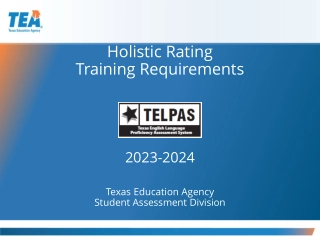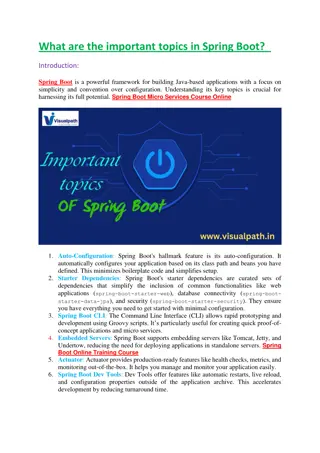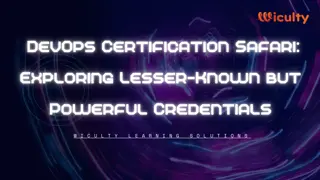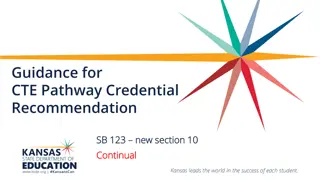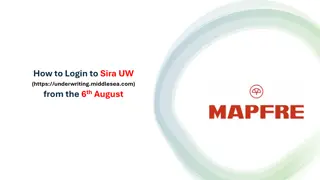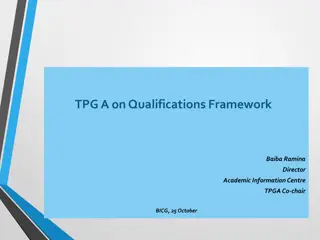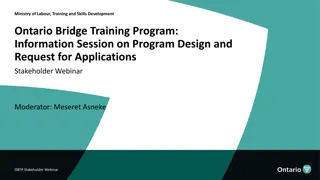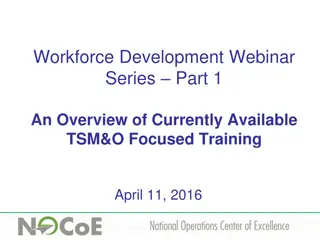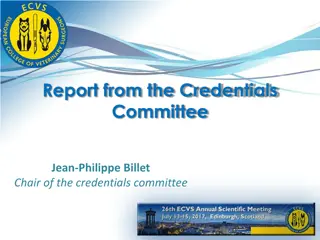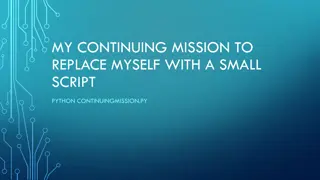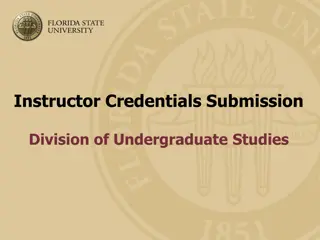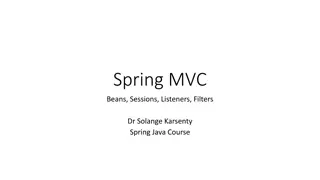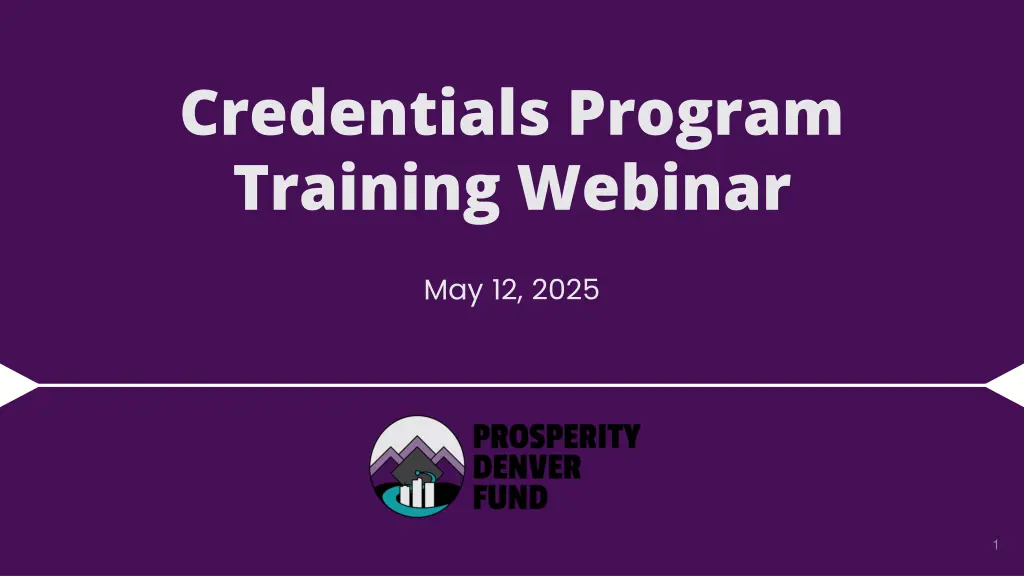
Credentials Program Training Webinar - Agenda, Timeline, and Critical Policies
"Discover the agenda, timeline, and critical policies for the Credentials Program Training Webinar on May 12, 2025. Learn about eligible learners, costs, reimbursement process, and training pathways. Understand the submission guidelines and key dates." (295 characters)
Download Presentation

Please find below an Image/Link to download the presentation.
The content on the website is provided AS IS for your information and personal use only. It may not be sold, licensed, or shared on other websites without obtaining consent from the author. If you encounter any issues during the download, it is possible that the publisher has removed the file from their server.
You are allowed to download the files provided on this website for personal or commercial use, subject to the condition that they are used lawfully. All files are the property of their respective owners.
The content on the website is provided AS IS for your information and personal use only. It may not be sold, licensed, or shared on other websites without obtaining consent from the author.
E N D
Presentation Transcript
Credentials Program Training Webinar May 12, 2025 1
Agenda Agenda Introductions Timeline Policies Program Resources Eligible Learners Eligible Costs Reimbursement Calculation Reimbursement Period Alignment AidKit Platform Instructions
Timeline Timeline 5/12 Training Webinar 3 4 pm 5/13 Credential Help Desk 1-2 pm 5/20 Credential Help Desk 1-2 pm 5/26 Credential Closes (EOD) 6/4 Credential Submission Confirmation Sent 6/18 Approval of reimbursements at PDF board meeting 6/20 Reimbursements distributed via ACH: Payments hit bank accounts within two business days 6/25 Reimbursement Summaries and Feedback Survey Sent
Critical Policies All expenses are submitted via AidKit online platform Training Pathway Validation & Tier Determination Training pathways that have not been submitted for validation are not eligible for reimbursement We partner CEEMI to determine reimbursement tiers and specific rates We encourage all SOs to upload expense verification documents. Beginning in fall of 2026 this will be required. Current Policy: SO is required to maintain all documents related to submissions for six years All requests for reimbursement must be reviewed and confirmed by a second staff member at the Supported Organization before being submitted to PDF
Credentials Program Resource Page Credentials Program Reimbursement Resources Program Guidelines Submission Resources
Eligible Learners 1. Be a Denver resident and/or graduated from a Denver high school (If over the age of 26, must provide Denver address) 2. Be thirty (30) years of age or younger as of the final scheduled class day of the academic year for which a reimbursement grant is requested Learner must be born on or after August 1, 1993 3. Demonstrate a financial need (see guidelines) 4. Achieves Satisfactory Academic Progress SAP is defined by your training program requirements and how you measure progress towards completing enough coursework to complete the program within a specific time period.
Eligible Costs Eligible Costs Costs of Training: A student s costs of attendance or participation in a training program, including, but not limited to, tuition, fees, room and board, books and supplies. In practice, this is the cost that would be transferred onto the learners should the SO not have funding to cover the costs of training and thereby defray the student s cost of attaining the credential or certificate Optional Support Services: Services designed to increase student persistence and completion that are not a required element of the training. When in doubt about whether or not a cost is eligible, please refer to the guiding questions below: Does the expense relate directly back to the learner s training or a service they received while an active learner in your program? Does the expense increase training persistence and credential attainment? Does the service remove academic and/or non-academic barriers to training persistence and credential attainment?
Eligible Costs Examples Eligible Costs Examples Indirect Costs Cost of Training (required for all learners) Optional Support Services (provided on an as-needed basis - Support Services Guide) (10% of combined cost of training & support services) Tuition & Fees - Credentialing Exam Fees - Competition Fees - Instructor Wages (salary + fringe) Room & Board - Required Off-site Training - Funding/Subsidies to Aid in Program Persistence (provided to all learners) Books & Supplies - Curriculum Materials - Learning Technology & Platforms - Labs/Clinicals Equipment & Supplies - Training Equipment Training of Staff necessary to be effective in pathway instruction (i.e. conferences, professional development, in-service, etc.) Education & Career Counseling Occupancy: Rent/mortgage for facilities, security, utilities, and cleaning services. Support Staff Wages (salary + fringe) Professional Development not directly related to a specific pathway and necessary for instruction. Emergency Funding/Subsidies to aid in program persistence (i.e. transportation, rent, groceries, etc.) Depreciation and amortization costs of purchased vehicles Technology not required for program (i.e. laptops) Meals for staff training Learner Networking Events Mental Health Resources (for
Total Reimbursement Amount Calculations Total Personnel Expenses Total Direct Operating Expenses + = Submitted Costs Total Eligible Expenses 10% of Submitted Costs + Submitted Costs = Average Cost of Training + Support Services per Learner Total Eligible Expenses Total Learners Supported / = Average Cost of Training + Support Services per Learner Total Learner s = x Reimbursement for Learner Reimbursement Rate
Reimbursement Periods Reimbursement Periods

